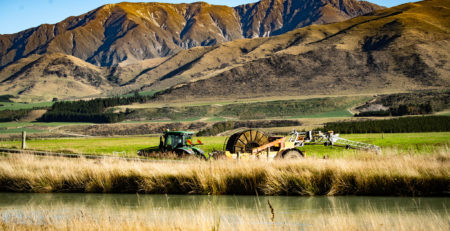What is Farm Slurry on a Dairy Farm?
How is Farm Slurry Made?
Slurry is created from cow manure and water and provides a fantastic, natural fertiliser that farmers can use to encourage the growth of grass and other crops. It is usually stored in a slurry tank or pond before it is applied to farmland as fertiliser. The dangers of working with slurry are well documented, as high amounts of gases can be released very quickly.Waste material from animals is collected from feed lots and milking sheds to be spread during the warmer months. First, it has to be broken up and mixed, normally in a tank, so it can be spread on the land. During this mixing stage, dangerous colourless and odourless gasses are produced that can kill within seconds.
What is a Slurry Pond?
A slurry pit is a hole, dam, or circular concrete structure where farmers gather all their animal waste together with other unusable organic matter, such as hay and water run-off from washing down dairies, stables, and barns.
This is in order to convert it, over a lengthy period of time, into fertiliser that can eventually be reused on their lands to fertilise crops. The decomposition of this waste material produces deadly gases and can be deadly in closed environments.
The Importance of stirring your effluent Pond.
Before a slurry pond can be emptied, it must be stirred at regular intervals.
Stirring a dairy farm effluent pond can bring several benefits, including:
-
Improved storage capacity: Stirring the effluent pond helps to prevent the formation of crusts and solids at the bottom of the pond, which can reduce the effective storage capacity. This allows the pond to hold more effluent, reducing the need for frequent emptying and disposal.
-
Better distribution of nutrients: Effluent in the pond may contain valuable nutrients that can be used as fertilizer for crops. Stirring the effluent helps to distribute these nutrients evenly throughout the pond, ensuring that they are readily available for plant uptake.
-
Reduction of odor and greenhouse gas emissions: Stirring the effluent can help to break up anaerobic zones within the pond, reducing the production of odorous gases such as hydrogen sulfide and ammonia. This can help to minimize unpleasant odors on the farm and reduce greenhouse gas emissions.
-
Improved effluent quality: By mixing the effluent in the pond, any solids or sediments can be evenly distributed, leading to a more consistent effluent quality. This can make it easier to manage and apply the effluent as fertlizer on fields.
-
Prevention of nutrient stratification: Stirring the effluent pond helps to prevent the formation of nutrient stratification, where heavier nutrients sink to the bottom of the pond and lighter nutrients float to the top. This ensures that all nutrients are homogenously distributed, improving the overall nutrient content and quality of the effluent.
Overall, stirring a dairy farm effluent pond can lead to more efficient storage, better nutrient distribution, reduced odors, and improved effluent quality, ultimately benefiting both the farm and the environment.
How often are slurry ponds to be emptied?
This is to ensure Each effluent application must not be more than 25 mm deep. Effluent must not run off the land into waterways. Effluent must not pond on the land surface after application.
For all your slurry solutions – Talk to the team at Central Injection Agri. We are a Canterbury based Agricultural Contractor specialising in the emptying and distribution of on farm liquid slurry, Pond Stirring and Muck Spreading.










